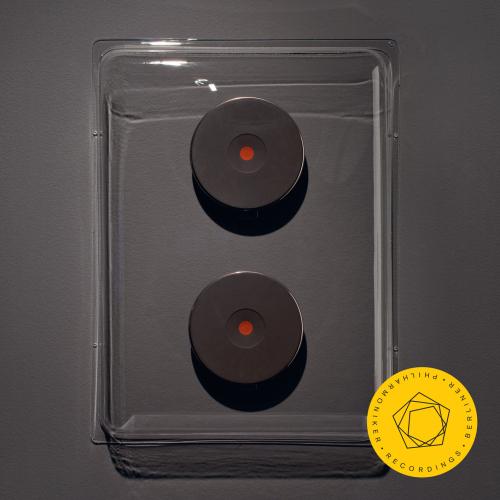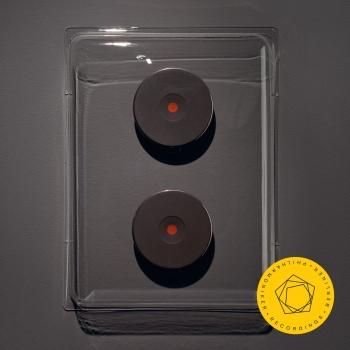
Beethoven: Symphony No. 7 Berliner Philharmoniker and Kirill Petrenko
Album info
Album-Release:
2020
HRA-Release:
25.09.2020
Label: Berlin Philharmonic Orchestra
Genre: Classical
Subgenre: Orchestral
Artist: Berliner Philharmoniker and Kirill Petrenko
Composer: Ludwig van Beethoven (1770–1827)
Album including Album cover
- Ludwig van Beethoven (1770 - 1827): Symphony No. 7 in A Major, Op. 92:
- 1 Symphony No. 7 in A Major, Op. 92: I. Poco sostenuto. Vivace 13:31
- 2 Symphony No. 7 in A Major, Op. 92: II. Allegretto 07:41
- 3 Symphony No. 7 in A Major, Op. 92: III. Presto. Trio I und II. Assai meno presto 08:27
- 4 Symphony No. 7 in A Major, Op. 92: IV. Allegro con brio 08:01
Info for Beethoven: Symphony No. 7
He may not have officially taken up office yet, but Kirill Petrenko, chief conductor designate of the Berliner Philharmoniker, could not miss the opportunity to conduct his future orchestra at the opening concert of the 2018/2019 season. With the two tone poems Don Juan and Tod und Verklärung by Richard Strauss, two works are programmed which are characterised by sophisticated, colourful and dazzling orchestration. They are considered showpieces for orchestra and are therefore ideal for Kirill Petrenko and the Berliner Philharmoniker to show off the full splendour of the orchestra’s playing.
Both works belong to the series of tone poems with which the young Richard Strauss lifted the genre of programme music to new heights and established his name as one of the leading composers of his time. Don Juan, the literary archetype of the Spanish ladies’ man, inspired countless poets and composers. Strauss impressively describes the development of the protagonist, from the impetuous, passionate womaniser to the mentally torn, life-weary man. Tod und Verklärung on the other hand, describes the last hours of a terminally ill man, his pain, his memories of better days, and finally his death. Incidentally, the Berliner Philharmoniker played both works under the direction of the composer shortly after the world premieres in Weimar in 1889 and Eisenach in 1890; as such, they are virtually part of the orchestra’s musical DNA. Strauss owed the fact that he had the opportunity to perform his tone poems in Berlin to his mentor Hans von Bülow, chief conductor of the Philharmoniker at the time. A few days before Strauss conducted his Don Juan, Bülow had already presented the work in one of the orchestra’s subscription concerts, provoking the displeasure of the self-confident composer who wrote to his parents: “So Bülow got the tempi, everything totally wrong, and has no idea of the poetic content [...].”
When Strauss wrote his two tone poems, he was at the beginning of a phenomenal career; By contrast, Ludwig van Beethoven had already reached the pinnacle of his fame when he composed his Seventh Symphony. With its optimistic, rousing and energetic spirit, it earned thundering applause from the audience at its premiere in 1813. The reviewer of the Wiener allgemeine musikalische Zeitung stated that the symphony “is so clear in every respect, so pleasing and easily comprehensible in every subject, that every music lover, without being a connoisseur, will be powerfully attracted by its beauty and burn with enthusiasm”.
“With Beethoven, sonata means instrumental poetry”: Some places have a magic that is difficult to explain, as though a spirit were secretly at work there, inspiring people to thoughts and actions. There was such a local spirit in the southern Thuringian city of Meiningen, in the person of Georg II, Duke of Saxe-Meiningen. When he succeeded his father in 1866 Georg also assumed responsibility for the Meiningen court theatre, whose ensemble he led for almost fifty years, establishing its international reputation with outstanding performances and European tours.
What Georg had accomplished with his actors he also wanted to achieve with his court orchestra. He saw that the moment had come in 1880: Hans von Bülow accepted his invitation to become the new music director of the orchestra. The Duke and the musician shared the goal of building an orchestra that would be able to give works the interpretations they deserved, and they were also in agreement about how that could be achieved, namely with the music of Ludwig van Beethoven. In a programmatic letter to his future employer Bülow presented his plan in a broader context: “I belong to the Meiningen School, so to speak; I have made a point, partly instinctively, partly intentionally, of emphasizing the Meiningen principles in my main sphere ... In my opinion, a Beethoven symphony is a drama for the listening imagination.”
Originality from the first moment: Beethoven’s Seventh Symphony
What Richard Strauss later observed about himself was already true of Beethoven: that he had reinvented the genre with every work. The originality is apparent from the first moment of the slow introduction in Beethoven’s Seventh Symphony. An oboe melody grows out of the opening orchestral chord and in the fourth bar already suggests a rhythmic motif that runs through the entire work in several variants. During the subtle transition to the fast section, a compelling force develops which is so far-reaching that no real contrasting second theme emerges. The second movement – with a theme that builds up layer by layer in a kind of variation form, interrupted twice by a gentle, comforting second theme – pleased the audience so much at the premiere in 1813 that it had to be repeated immediately.
The scherzo is in the remote key of F major: the first joke that Beethoven indulges in during this movement. The second trick is the fact that the trio switches to the home key of A major without advance warning. The final prank comes at the close: here the composer feints another repetition of the trio, then slams the lid down with five orchestral blows. The finale takes up these blows and throws itself into an allegro frenzy whose “con brio” marking is to be understood literally. The theme hurls the notes around the listeners’ ears, the rhythm dominates everything, and the melodies, almost like fragments in their breathlessness, are swept away by the propulsive energy.
During the fifth (and last) year of his tenure in Meiningen, 1885/1886, Bülow lost his assistant: Franz Mannstädt was appointed conductor of the Berlin Philharmonic Orchestra in spring of 1885. As his successor Bülow chose a musician who was barely 20 years old: Richard Strauss. This appointment was a turning point in the career of the young Munich native. Although he had no previous practical conducting experience, within a short time he became one of the most important conductors of his generation. Years later he said that “Bülow trained me as a conductor in his and Wagner’s spirit”. Bülow’s influence extended far beyond conducting techniques, however. As a composer who had not yet found his own voice, Strauss underwent what was probably the most fundamental change in his musical-aesthetic thinking in Meiningen – with Beethoven, above all, as his example. In Bülow’s interpretations, Strauss wrote, “the full light of Beethoven’s sun shone on me for the first time in my life”. This realization had a great deal to do with Bülow’s conviction that “with Beethoven, sonata means instrumental poetry”. Both ideas became essential aspects of Strauss’s music. Each of his works is a confrontation with the question of how sonata form can be reconciled with musical narrative.
Berliner Philharmoniker
Kirill Petrenko, conductor
No biography found.
This album contains no booklet.









